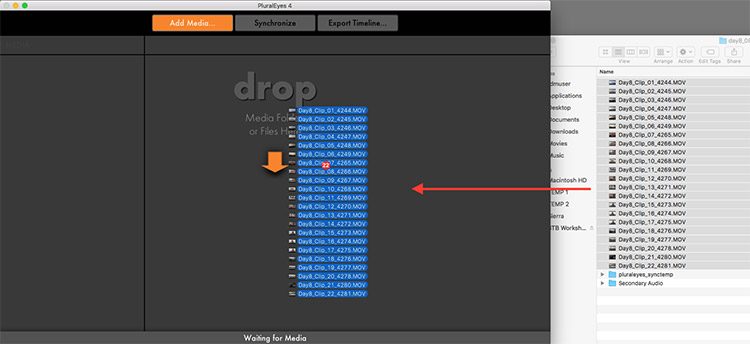
If the clips fall into distinct nonoverlapping groups then several multiclips and sequences are created. If possible, it also creates a multiclip called pluraleyes. PluralEyes synchronizes the clips and creates a new sequence called pluraleyes # (synced) and opens it in the timeline.


They can be positioned anywhere in the sequence, as long as all the clips from one camera go onto the same track (assuming they don't overlap). ♺dd the clips to the pluraleyes sequence. The most common way to use PluralEyes is to automatically synchronize the clips in a sequence. PluralEyes automatically synchronizes all your audio and video files without requesting you any timecode, clappers or any other special preparation.

PluralEyes saves hours in post-production for multi-camera edits, dual-system audio or multi-take workflows such as music videos.


 0 kommentar(er)
0 kommentar(er)
